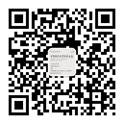| 基金项目: |
|
| 摘要点击次数: 2645 |
| 全文下载次数: 893 |
| 中文摘要: |
| 目的 探讨医学检验形态学数字化网络平台的构建及其对临床教学的作用。方法 收集外周血、骨髓片、尿沉渣、寄生虫、分泌物、腔积液、医学微生物、染色体等实验室形态学检验图片,应用Authorware多媒体软件、Access数据库、Web接口制作了能够在线学习、实训和考试的数字化网络平台;30名临床检验实习生随机分入传统教学组与软件教学组进行形态学检验考核,统计分析两组学生理论考试成绩、考试用时、实践操作成绩以及满意度评价。采用SPSS 13.0进行Student’s t检验和Pearson卡方检验。结果 软件教学组的理论成绩、实践操作成绩[(88.0±6.4)分,(85.3±7.1)分],均高于传统教学组[(76.3±8.1)分,(80.3±7.9)分](P=0.000 1),而理论考试用时(93.7±10.5) min,低于传统教学组的(115.8±16.2) min(P=0.033 8);问卷调查显示,软件教学组对教学内容系统性、手段多样性、临床学习兴趣、考核公平性的满意度高于传统教学组,差异有统计学意义(P<0.05)。结论 软件教学能够提升形态学检验教学质量和教学效率,增强学生学习自主性和专业技能,为适应检验医学职业化教育提供一个强有力的平台。 |
| 英文摘要: |
| Objective To explore the digital network platform construction of morpghology of laboratory medicine and its effects on clinical teaching. Methods Laboratory morphological inspection pictures of peripheral blood, bone marrow slices, urinary sediments, parasites, secretions, cavity effusion, medical microorganisms and chromosome specimens were collected to build a digital network platform for online learning, practical training, and examination by applying Authorware multimedia software, Access database, and Web interface. Afterwards thirty interns on laboratory medicine were randomized into two groups: traditional teaching group and software teaching group for morphological assay examination. The differences in theoretical scores, exam time, practical operation scores, and satisfaction rates between two groups were statistically analyzed by t test and Pearson Chi-square test using SPSS 13.0. Results The software teaching group showed significantly higher theoretical and practical scores [(88.0 ± 6.4); (85.3 ± 7.1)] than traditional teaching group [(76.3±8.1); (80.3±7.9)] (both P=0.000 1), and its theoretical exam time [(93.7 ± 10.5) minutes] was significantly shorter than traditional teaching group [(115.8±16.2) minutes] (P=0.033 8). The questionnaire survey results showed that software teaching group showed higher satisfaction rates in the aspect of teaching content systematization, diversity of teaching methods, clinical learning interest and fairness of assessment than traditional teaching group, with statistical significance (P<0.05). Conclusion The software teaching model could improve quality and efficiency in teaching morphological assay, enhance students' learning autonomy and professional skills, and provide a powerful platform to adapt to vocational innovation of laboratory medicine education. |
|
查看全文 查看/发表评论 下载PDF阅读器 |
|
| 关闭 |
|
|
|
